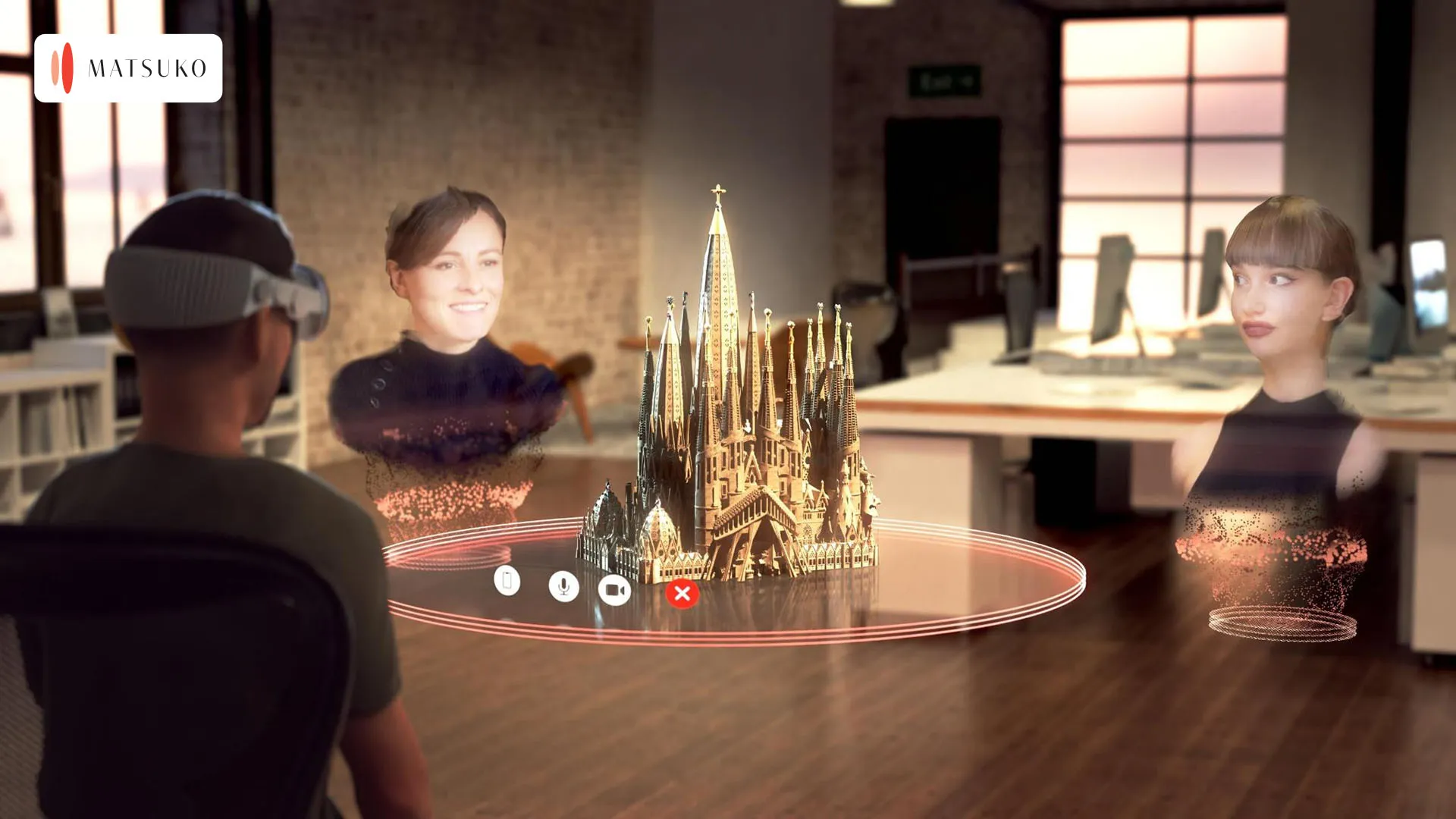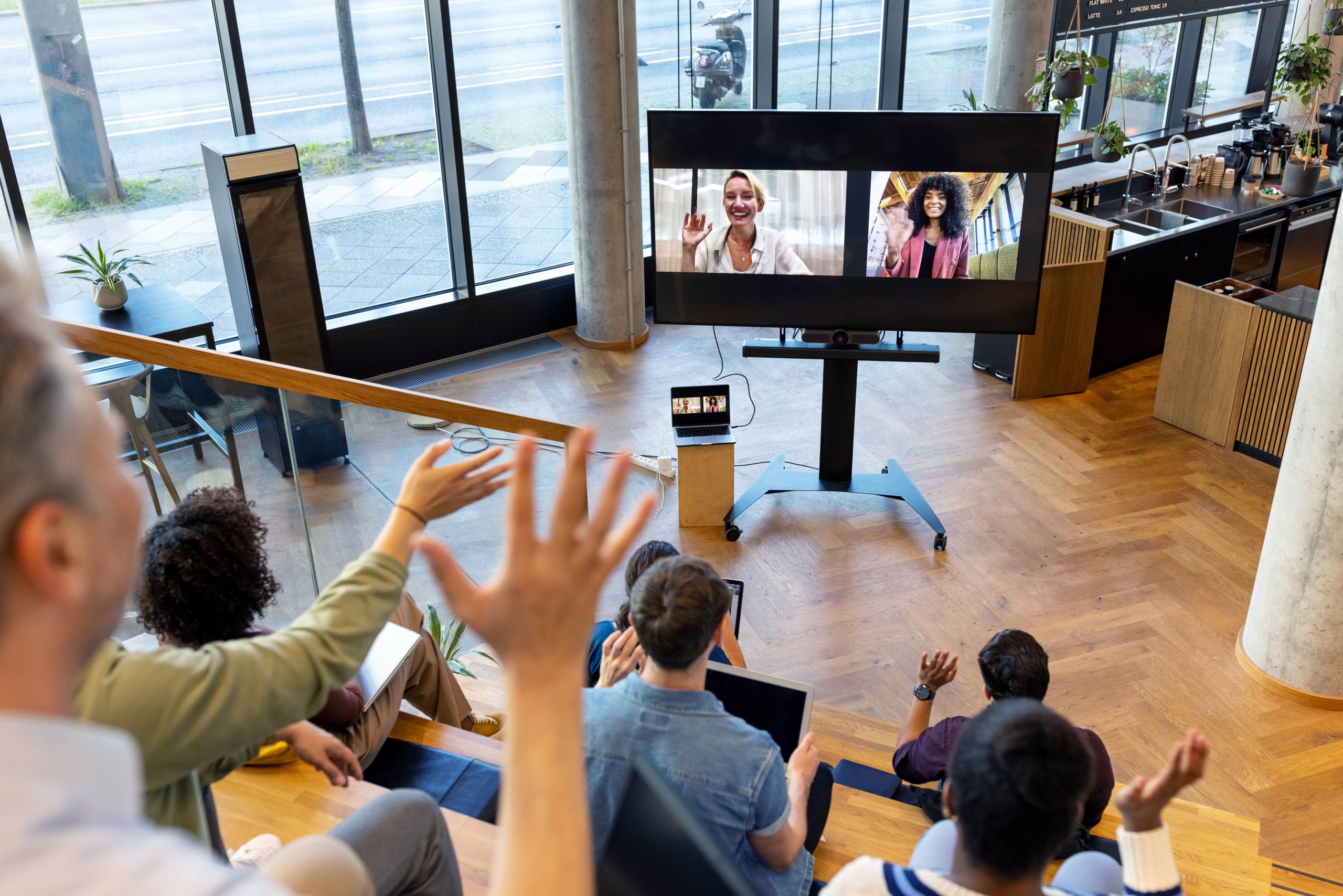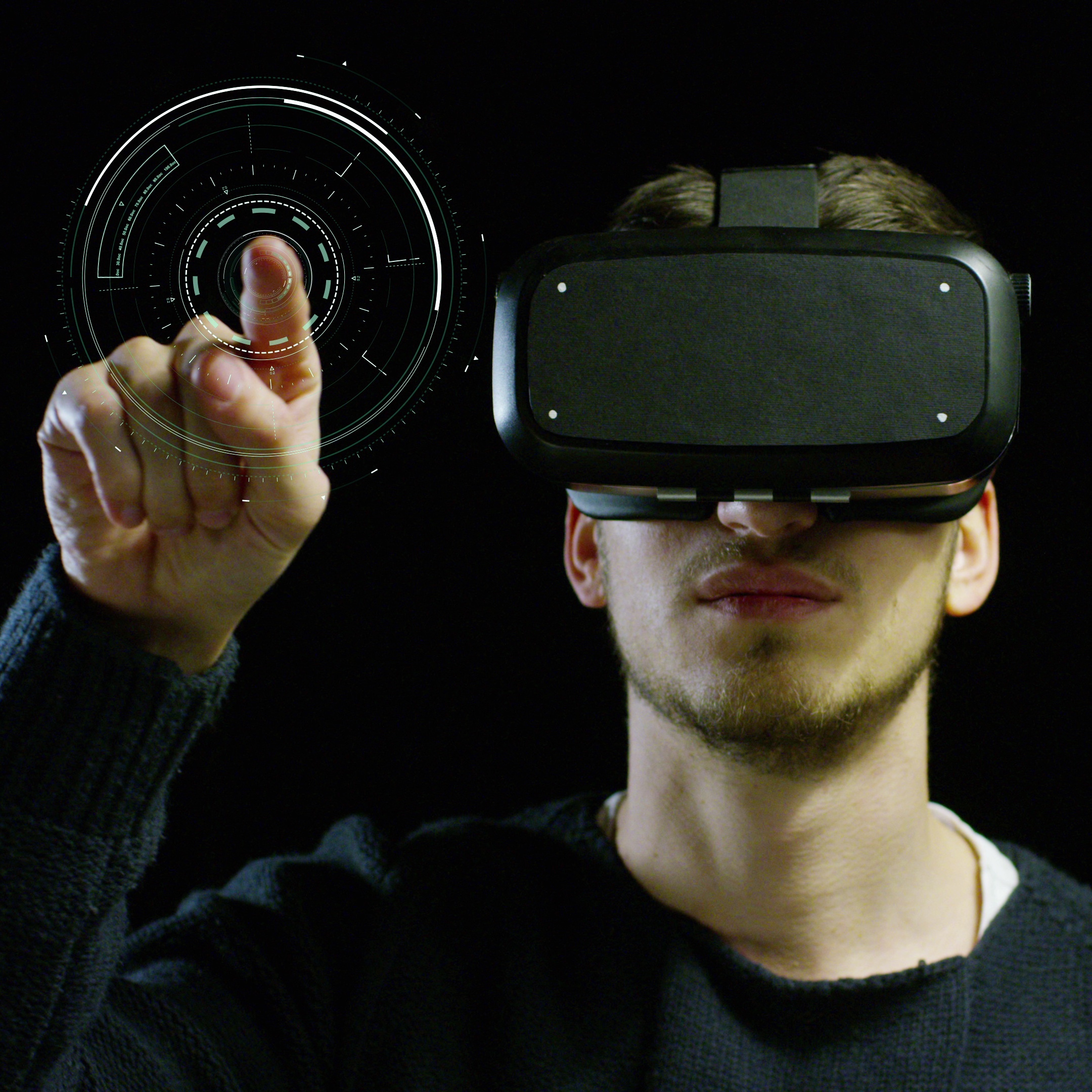Top 10 Technologies to Engage Remote Audiences and Showcase Locations and Concepts
How often do you find yourself in video meetings, closing deals from a distance, or training your team remotely? How much of your day is spent conveying ideas, pitching concepts, or giving feedback to clients, prospects, or even your top executives—all from behind a screen or through a screen?
And how many times have you wished for a better, more engaging way to get your message across to these remote audiences?
Sometimes, you’re even able to get your target audience into the same room, like at a conference or expo or at your band experience centre. But the problem persists: You cannot showcase a remote facility that you’re proud of. You may not be able to showcase the inner workings of machinery, or a product still in the concept stage.
Consider these questions: How much of your budget is poured into reaching people who aren’t in the same room? Do your sales, product, or customer success teams frequently demo remote or to-be-imagined concepts? How often do you need to tell potential clients (or employees or regulators) about something when showing them would be far more effective?
Was your answer to any of these “all the time,” “most of the time,” or “a lot,”? If yes, then you need tech that can make remote interactions and showcases as compelling as face-to-face meetings and promotions.
We’re going to show you 10 technologies that not only bridge the gap but actually make remote interactions and viewings even better than in-person meetings of the past. Whether you need to connect with people remotely or need to connect an audience to a remote concept or location, this list can help you improve your communication game.
Who needs these technologies?
Anyone who hosts roadshows and participates in expos or needs to improve their showcasing abilities. This list includes:
- Construction materials and construction companies who may want to showcase projects to builders and home buyers.
- Governments and tourism boards want to showcase destinations to travel agents and tour operators in a see-before-you-sell endeavour—also, airlines when they launch first-class seats, lie-flat beds, and so on.
- L&D teams and simulators. Onboarding and pre-project training teams.
- Manufacturers who might want to showcase their facilities, processes, or prototypes.
- Healthcare companies should showcase the effects of their products on the human body.
- Companies that need to display concepts before development in order to obtain regulatory approval.
- Any business or institution looking to improve its showcasing abilities.
10 technologies that should be on your radar
- Interactive Projection Systems
There’s so much more you can do beyond just sticking things on walls. Exciting.
Think about a museum exhibit where a historical timeline stretches across the floor. As visitors walk along it, video clips or animations come to life, revealing different periods of history (or, in your case, your brand’s history). Or consider a museum where additional information or 3D models are projected directly onto the floor next to an exhibit. Visitors can tap their phones on the projection if they want to dive into deeper insights.
There are already examples of interactive projection systems revolutionizing museum experiences. For instance, the Epic Museum in Dublin has achieved floor-to-ceiling projection systems to tell the story of Irish immigration and its cultural impact. Other museums up the ante on the interactiveness of projection systems by having projected scenes morph and react to visitor movement. Look at this video of Hacking Paris 2020 where the stairs literally react to people ascending them. This “magic” is made possible by projection mapping combined with sensors.
How to use this to engage a remote audience:
This type of technology is best used in a situation where the remote audience needs to view a concept or a distant site but can be gathered on site for a demonstration. You still allow them to view a remote factory, or other remote site (or virtual prototype) but this cannot—at least not yet—be controlled and managed remotely.
- Holographic Telepresence
As the name suggests, holographic telepresence involves sending a hologram of yourself (or your concept, prototype, manufacturing facility, location and so on) to your remote audience.
A brand called Matsuko has developed technology that allows you to create holograms using only smartphone cameras. Their solution also allows you to stream holograms and holographic scenes—provided you’re on 5G. The brand promises “incredibly realistic eye contact and facial expressions, enhancing the sense of presence and immersion.”
People need to view holograms through headsets like the Apple Vision Pro.
The concept might sound incredibly futuristic, but tech-first companies have already embraced it. Look at how Deutsche Telekom uses holographic telepresence to interview new employees remotely.
How to use this to engage a remote audience:
Just like Deutsche Telekom, you could use telepresence to connect with remote audiences. We’ve also begun to occasionally witness this at high-profile conferences, where a speaker might not make it to their session for various reasons but still manages to show up and share their views, using holographic telepresence.

Photo courtesy—MATSUKO
- Augmented Reality (AR) Projections
Projection-based AR differs from the AR you’re used to in that it uses digital projectors to overlay content and objects onto physical objects or surfaces in the real world. This means your remote audience would not need to view your overlays of their surroundings through a mobile or iPad screen—they simply see them projected in front of them, as if they were really there. The overlay might represent a person, place, or object.
The foundation for this technology has existed for a while, as you can see in this video of two individuals observing objects (without screens or wearables) in their natural environment. There have also been a lot of talks, like this proof of concept, about how projection-based AR (also known as SAR) can enable architects to collaborate with greater ease in building modelling. However, the process of creating realistic projection-based AR experiences for remote audiences is made more possible today with developer solutions like Unity Vuforia Engine and its Area Targets module. In this video, you can see a tutorial for back-end development of such an experience.
How to use this to engage a remote audience:
How you present this experience depends on the projection capabilities required for your SAR experience and the projection solutions your remote audiences possess. You should get your audience to a centralized site to view a remote scene, person or object or allow your audience to project directly onto their real-time environment. Or you could project remotely. That brings us to our next point.
- Web-Based AR and VR Platforms
These platforms allow you to disseminate VR and AR experiences to your remote audience using just the internet. In other words, you deliver an immersive experience without enabling the dedicated hardware and software installations. Your remote audience accesses the experience through any device of their choice, combined with a VR controller.
You can see how this works within this VR garden-building experience by Meta (it’s no surprise that Meta is an early mover in this space, considering the Metaverse). You can access this experience from any PC, laptop, or mobile device you’re using right now. You can start to navigate and immerse yourself in the experience with nothing more than your existing device and a gaming controller.
Take a minute, and try it!
How to use this to engage a remote audience:
WebAR platforms let you instantly deploy your immersive experience to your remote audience’s browsers. So send them a link and transport them to your factory, conference room, or proof of concept. They access it whenever they want and can also share the experience with other stakeholders (and budget approvers).
- Laser Projectors with Real-Time Streaming
As you may imagine, the interactive projection systems and AR projections we talked about earlier in this blog would call for some state-of-the-art projectors. That’s where laser projectors with real-time streaming come in. These devices allow you to project bright images with razor-sharp resolution and uniform luminance on massive surfaces, including domes and any other irregularly shaped objects. They also come with “ultra-short throw versions” that allow you to position your projector out of sight, making the whole scene far more believable.
These projectors are available on the market, but as this page’s “request a callback” button would indicate, they represent a sizable investment—think through how you will maximize utilization and ROI.
How to use this to engage a remote audience:
This is the hardware that enables the solutions we described in interactive projection mapping and AR-based projection. It allows you to transport your audience to any remote location. For instance, it might be handy in training a team for jobs in remote environments, like offshore jobs, undersea environments, and space travel.
Meanwhile, the next technology on this list could allow you to control the experience remotely.
- Projection-Mapping with Remote Control Hybrid Projection
You’ve seen a variety of projection mapping videos by now. Brands have made the Burj Khalifa dance on numerous occasions. Today, platforms like Façade Signage add remote control capabilities to the mix—you manage content that your remote audience sees from your PC or tablet.
How to use this to engage a remote audience:
Provided they have decent projector capabilities (or the state-of-the-art projectors we looked at in the last point), you can deliver a fairly realistic immersive experience to your remote audience right from your desk.
Alternatively, you gather your audience at an event or central location in their geography and showcase your destination, soon-to-break-ground real estate project, automobile prototype, or futuristic shop floor without ever needing to leave your office.
- Video Conferencing Systems
This might sound fairly everyday, but we’re talking about the hardware that makes Google Meet, Microsoft Teams, and Zoom meetings feel more lifelike.
Good examples from Poly (which used to be called Polycom and is now owned by HP), a popular video conferencing equipment brand, include the Studio X50. This model gives you a camera, stereo speakers, microphones with a 25-foot pick-up, and software, all built into a single sleek bar. Thanks to AI-enabled noise cancellation and high-res MP4 video quality, you also get next-to-real audio quality while conversing with your remote audience.
For larger set-ups, you can choose a slightly more upgraded option, the Polycom Realpresence, which is created for meeting environments like classrooms and large conferences. Its camera captures rooms in 1080p HD video with 12x optical zoom. The system is also multipoint, allowing you to connect from 8 sites or 8 computers within your organization.
How to use this to engage a remote audience:
You have—in all likelihood—already been using video conferencing to engage remote audiences since 2020. By adding these systems to the mix, you can bring your online meetings and conferences closer to real-life interactions.
- Telepresence Robots
Controlled via a computer, tablet, or smartphone, a telepresence robot typically consists of a video camera, screen, speakers, and microphones (put together in a very typical “robot-looking” body—-check them out here). You get to place your “telepresence virtually: anywhere. You see and hear what’s happening in the remote location, while those interacting with the robot can see and listen to you in real time.
Some models require you to attach a tablet or phone, while others have built-in video and audio features, making the experience seamless and immersive.
How to use this to engage a remote audience:
Send a robot on your behalf to engage your remote audience. Similar to holograms, your telepresence can make a keynote address on your behalf. Alternatively, allow an onsite audience to take control of robots in remote locations, allowing them to explore sites without leaving the comfort of their office or other convenient location. Imagine impressing a remote audience of potential clients at a centralized brand experience centre by allowing them to access your offshore oil rig from the comfort of their city.
- Cloud-Connected Smart Projectors
Yet another projector? Well, yes, and this type is wireless, intelligent, and also comes with a ton of storage—-this means that it can be set up virtually anywhere. The BenQ version we’re spotlighting has massive cloud storage because it integrates seamlessly with Google Drive and Microsoft OneDrive. It also packs internet access, allowing you to access files on the spot and then project images, video, and presentations in a large, high-quality format.
How to use this to engage a remote audience:
The portable, anytime, anywhere nature of this projector means that you can you can send a facilitator to the other party’s location. Alternatively, use it to showcase remote locations and concepts to your target audience at a central area of their choice—like at an expo or your brand experience centre.
- Virtual Reality (VR) Projection Systems
Like the AR projection systems we discussed earlier, VR projection systems create striking visualizations via low-footprint 3D ultra-short throw projectors, transforming your space into a nearly floor-to-ceiling virtual environment.
A good example is the VizMove Projection VR system (watch it in action in this video), a multi-wall VR projector that can be concealed easily in the corner of a room, adding to the realism of the whole experience.
How to use this to engage a remote audience:
Like AR projection systems, this technology is best used to showcase remote facilities, under-the-hood workings, and other concepts to a centralized audience.
Embrace the future with caution and a strategic approach.
These innovative technologies are exciting and full of promise. They can help you connect with your audience better, showcase your offering better, and make interactions much more memorable. No client will be beyond your reach, and you won’t be beyond any client’s reach.
But beyond the well-deserved hype, there’s the how:
How will you find the right mix of technology that aligns with your product, purpose, and price point? It’s not just about selecting the latest tools; it’s about choosing the ones that seamlessly integrate with your objectives and resonate with your audience.
Similarly, how will you centralize these technologies or enable your remote audience to access them effortlessly? Save for video conferencing, allowing access to all of these technologies will rest with you, not your remote audience.
These decisions will determine whether your remote interactions function or truly flourish.
A partner like magineu can guide you through this complex landscape, helping you craft a strategy that will help you meet your business goals with minimum friction, stress, and trial and error. Contact us to plan how to wow your remote audiences.



